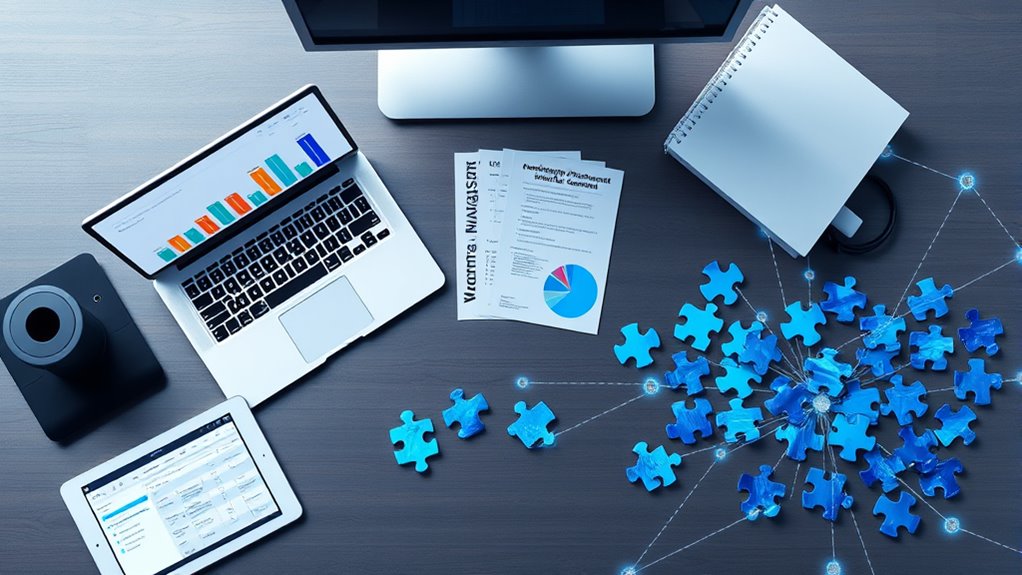Vendor management is a thorough business function that oversees relationships with suppliers, contractors, and service providers throughout their lifecycle. It involves strategic vendor selection, performance monitoring, risk assessment, and cost control through structured processes and systems. Organizations use vendor management systems (VMS) to centralize data, automate workflows, and track key metrics like delivery times and quality standards. Effective vendor management leads to improved efficiency, reduced risks, and significant cost savings for organizations that master its key components.

In today’s complex business landscape, vendor management stands as a vital organizational function that oversees the entire lifecycle of supplier relationships. This thorough process encompasses controlling costs, reducing vendor-related risks, guaranteeing service deliverability, and deriving long-term value from vendors. Organizations must understand their needs and market conditions to effectively align vendor capabilities with business objectives.
The vendor management process begins with strategic segmentation, where vendors are classified based on factors like profitability, risks, quality, performance, and transaction volume. This classification enables organizations to select appropriate vendors and determine the level of engagement required for each relationship. Organizations that implement proper vendor management can achieve significant cost savings. Contract negotiation typically follows to establish favorable terms and conditions for both parties.
Following selection, a robust onboarding process guarantees vendors understand business requirements and compliance expectations. Strong vendor relationships foster service quality and enhance overall organizational efficiency.
Performance monitoring and evaluation form the backbone of effective vendor management. Organizations track key performance indicators including delivery timeliness, product quality, compliance rates, and customer satisfaction. Regular performance reviews, often conducted through vendor scorecards or dashboards, provide transparent tracking of these metrics and support decisions regarding contract renewals, penalties, or corrective actions.
Modern vendor management relies heavily on specialized Vendor Management Systems (VMS), which serve as centralized digital platforms for managing vendor data and interactions. These systems store thorough vendor profiles, automate workflows, and facilitate direct communication with vendor account managers. The implementation of VMS has largely replaced scattered documentation methods, greatly improving accuracy and efficiency in vendor management operations.
Risk management plays a vital role throughout the vendor relationship lifecycle. Organizations must continuously identify and mitigate potential issues such as vendor financial instability or regulatory non-compliance.
This process requires ongoing collaboration and communication between parties to address concerns and streamline processes like order fulfillment. Through careful attention to these elements, organizations can maintain mutually beneficial vendor relationships while guaranteeing peak performance and value delivery.
Frequently Asked Questions
How Long Does It Typically Take to Onboard a New Vendor?
Vendor onboarding typically takes 2-6 weeks, though timelines vary based on several factors:
- Complexity of internal approval processes
- Vendor’s responsiveness with documentation
- Strategic importance of the partnership
- Volume of compliance requirements
- Cross-departmental coordination needs
Simple vendors with minimal compliance needs may complete onboarding in 3-5 days, while strategic or high-risk vendors requiring extensive evaluation can take 8-12 weeks.
What Software Tools Are Most Recommended for Vendor Management?
Several top-rated vendor management software solutions stand out in the market.
SAP Fieldglass offers extensive features for large enterprises with complex needs, while Rippling provides an all-in-one platform integrating HR and payroll functions.
For IT-focused organizations, Vendr delivers specialized vendor tracking capabilities.
Cflow and Knowella excel in compliance management and workflow automation, with Cflow being more budget-friendly and Knowella emphasizing risk management features.
Can Small Businesses Benefit From Formal Vendor Management Programs?
Small businesses can markedly benefit from formal vendor management programs through multiple key advantages.
These programs enable better cost control through negotiated pricing and payment terms, reduce operational risks through continuous monitoring, and streamline administrative processes.
Additionally, they help build stronger supplier relationships, improve quality control, and enhance overall business efficiency.
The structured approach allows small businesses to compete more effectively despite limited resources.
What Certifications Are Valuable for Vendor Management Professionals?
Several key certifications provide value for vendor management professionals. The Certified Supply Chain Vendor Manager (CSCVM) focuses on supplier relationships and risk mitigation, while the Certified Regulatory Vendor Program Manager (CRVPM) specializes in regulatory compliance for financial institutions.
Additional certifications include the Certified Regulatory Compliance Manager (CRCM). These credentials demonstrate expertise, enhance career opportunities, and provide structured knowledge in vendor management best practices and regulatory requirements.
How Often Should Vendor Performance Reviews Be Conducted?
Vendor performance review frequency depends on the relationship’s impact and criticality.
High-impact vendors require quarterly or semi-annual reviews, while lower-priority vendors need annual assessments.
Key factors determining review intervals include:
- Contract value and complexity
- Service criticality to operations
- Risk level and compliance requirements
- Length of partnership
- Past performance history
Reviews should follow a structured schedule to maintain consistent oversight and proactive risk management.









